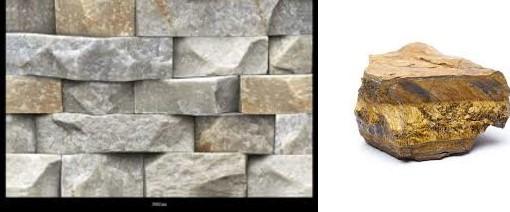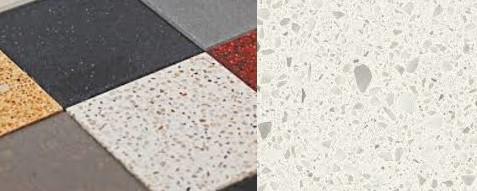The ‘design process’ is a phrase that covers a series of operations undertaken by a designer that leads to a well-crafted interior option that fulfills the customer’s requirements. The course of action is not exclusive to the interior layout but applies to all areas of design. The job differs from the purely cosmetic pattern to structural modification. An interior designer can manage the space preparation and production of decorative schemes at the same time while contemplating major structural adjustments. Natural materials such as sand, wood, or stone show a specific caliber of design, whether the products are costly. Besides the psychological reaction to materials, a designer evaluates the technical characteristics of the fabric option or the balance between aesthetics and tranquility. A diverse but compatible choice of materials that represent natural attributes offers a unique variety and diversity for decoration. The capacity to use different materials and products is a delight to the sense of touch, feel, and reason. This paper examines the importance of material and product selection in interior design. Based on this arrangement, the report will discuss the relevance of a material (Stone) and a product (Caesarstone).
Stone
As found in figure 1, stone is a good natural formation of different minerals. Various kinds of rock have been quarried around the globe. The minerals in a rock are extracted from the same gas and liquid elements that shaped the earth’s surface. The earth was formed as an enormous body of liquid and gas minerals, which gradually cooled and compressed into a fine core. Through stress and pressure, the planet’s crust was shaped, and heavy minerals have been formed from different immobilized states. Since the crust got warmer, it pumped rounds of liquid materials, which generated intense heat and pressure within the earth’s crust. Stones and other forms of natural occurrence were formed from vapors released from the earth’s crust. As the planet’s crust enlarged and eroded, the heat broke the strong minerals into colossal stone beds. These stone beds form the quarry site where rocks have been extracted. Color, resistance, and quartz formation are recognizable properties of these minerals. Stone crystals can be extracted in different forms, sizes, and shapes. The broad selection of minerals is often challenging for interior designers. Although stone, crystal, or quartz materials are similar in form, each compound has unique characteristics.

Caesarstone
Caesarstone established the production of quartz and other stone components from the earth’s toughest and abundant elements. The combination of soil, quartz, crystals, colors, and polymers has been used to create durable surfaces. These surfaces have been manufactured with advanced technologies incorporated with excellent quality trends in colors and layouts. Quartz, a natural form of silica, is an essential building component for many silica products. As found in figure 2, quartz is transformed into different fine forms and compounds of silica under high pressure and temperature. Silica is developed from the Arabian Earth’s crust to approximately 50 percent by the technique of igneous differentiation and stone sedimentation.

Product and Material Selection and Relevance in Interior Design
Stone material provides a reliable link to the planet’s minerals and contains unique properties for creative designs. Sandstone, marble, and granite are the initial choices of rock, but even in these fundamental forms, the number of available components nets for interior designs is unlimited. Surface designs display a natural pattern of stone used in decoration (Sadıklar & Tavşan, 2016). As a result, designers and decorators select suitable materials based on the customer’s requirements. Variations from the patterning of rocks occur wherever these materials are located, and deviations in the aesthetic impact may be localized (Rashdan & Ashour, 2017). Most materials and products widely used for interior designs have reached their exhaustion limits due to high demand. As a result, designers are producing fine combinations of silica, stone, and natural elements to supplement the decorative elegance in design. As the rock is quarried, it is molded into sizes and refined to reveal different inherent designs.
Materials selection has been considered as the most significant process involved in building the practical and aesthetic pattern for interior designs. Regardless of the simplicity represented in using this term, deeper comprehension of the notion reflects the selected material and its ability to suit the integral decoration as furniture components (Rashdan & Ashour, 2017). Within the subject of interior design, product and material selections are essential elements in the performance of inner space art. The varieties of materials based on clear standards are regarded as one of the most crucial inputs, enhancing task efficiency and functional performance. The material selection represents a thorough picture of the designer’s imaginative abilities through their active role in providing interdependent graphics that ease the consumer’s integration in the surroundings (Sadıklar & Tavşan, 2016). This integration is more evident as it permits the conscious understanding of operational meanings of motion in interior space using a specific combination of material elements (Hayles, 2015). These material elements include walls, cabinets, and light. Therefore, material selection creates the general aesthetic system in which products become compatible with the surrounding by evaluating its texture, structure, color, and supply.
Evaluation of Environmental applications of the Product and Material
It is important to assess the properties of materials as a design component itself and the pattern of quality and quantity to assist users in affirming the design sense and comprehend the significance of each product. While the choice of the material for an interior layout is based on the selection criteria and general standards, decorators must consider the wishes and options of customers, the requirements of consumers, thee prerequisite of use, cultural, societal, and financial measurements linked as an independent component. This concept proves that general standards must be enforced when choosing the content for interior design (Rashdan & Ashour, 2017). The general guidelines could be categorized as imaginative, technical, practical, aesthetic, economic, and ecological. However, these guidelines must be based on the requirements of each undertaking. Even with these assumptions, designers must consider different standard criteria linked to the style of interior space. The standards of selection exceed the quality of materials as the dominant layout component or the result of the physical effects of touch, feel, and sight. Interior designs have been developed under the sway of art trends and in accordance with the creative framework and material-related improvements. Comprehension of interior design has led to changes in material production, product types, and quality (Demirbaş, 2017) The challenge of defining a design identity is influenced by a vast array of subjects from different products, the competition for material demand, and civilization (Sadıklar & Tavşan, 2016). In this aspect, designers deployed a multi-disciplinary strategy, consisting of representatives of different professions to accomplish flexibility in the design activity.
References
Demirbaş, O. (2017). The fundamentals of interior design. The Design Journal, 20(4), 537-542.
France Minerals. (2019). Tiger’s Eye Stone. Web.
Granite & Stone Leaders. (2020). Caesarstone.
Hayles, C. (2015). Environmentally sustainable interior design: A snapshot of current supply of and demand for green, sustainable or fair trade products for interior design practice. International Journal of Sustainable Built Environment, 4(1), 100-108.
Rashdan, W., & Ashour, A. (2017). Criteria for sustainable interior design solutions. WIT Transactions on Ecology and the Environment, 223(1), 311-322.
Sadıklar, Z., & Tavşan, F. (2016). A study on selection of polymer based surface materials in interior design. Global Journal on Humanites & Social Sciences, 1(3), 387-386. Web.